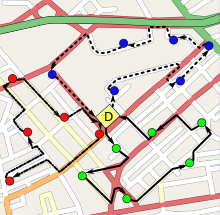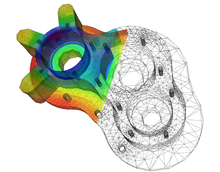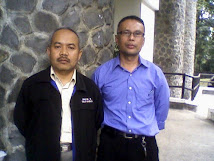Applied mathematics is a branch of mathematics that concerns itself with mathematical methods that are typically used in science, engineering, business, and industry. Thus, "applied mathematics" is a mathematical science with specialized knowledge. The term "applied mathematics" also describes the professional specialty in which mathematicians work on practical problems; as a profession focused on practical problems, applied mathematics focuses on the formulation and study of mathematical models. In the past, practical applications have motivated the development of mathematical theories, which then became the subject of study in pure mathematics, where mathematics is developed primarily for its own sake. Thus, the activity of applied mathematics is vitally connected with research in pure mathematics.
Divisions
There is no consensus as to what the various branches of applied mathematics are. Such categorizations are made difficult by the way mathematics and science change over time, and also by the way universities organize departments, courses, and degrees.
Historically, applied mathematics consisted principally of applied analysis, most notablydifferential equations; approximation theory (broadly construed, to include representations,asymptotic methods, variational methods, and numerical analysis); and applied probability. These areas of mathematics were intimately tied to the development of Newtonian physics, and in fact the distinction between mathematicians and physicists was not sharply drawn before the mid-19th century. This history left a legacy as well: until the early 20th century subjects such as classical mechanics were often taught in applied mathematics departments at American universities rather than in physics departments, and fluid mechanics may still be taught in applied mathematics departments.[1] As well as physics, engineering and computer science have traditionally made use of applied mathematics.
Today, the term applied mathematics is used in a broader sense. It includes the classical areas above, as well as other areas that have become increasingly important in applications. Even fields such as number theory that are part of pure mathematics are now important in applications (such as cryptography), though they are not generally considered to be part of the field of applied mathematics per se. Sometimes the term applicable mathematics is used to distinguish between the traditional applied mathematics that developed alongside physics and the many areas of mathematics that are applicable to real-world problems today.
Many mathematicians distinguish between applied mathematics, which is concerned with mathematical methods, and the applications of mathematics within science and engineering. Abiologist using a population model and applying known mathematics would not be doing applied mathematics, but rather using it; however mathematical biologists have posed problems that have stimulated the growth of pure mathematics. However, mathematicians like Poincaré and Arnolddeny the existence of "applied mathematics" and claim that there are only "applications of mathematics"; similarly, nonmathematicians blend applied mathematics and applications of mathematics. The use and development of mathematics to solve industrial problems is also called industrial mathematics.[2]
The success of modern numerical mathematical methods and software has led to the emergence of computational mathematics,computational science, and computational engineering, which use high performance computing for the simulation of phenomena and the solution of problems in the sciences and engineering. These are often considered interdisciplinary disciplines.
Source: Wikipedia













Tidak ada komentar:
Posting Komentar